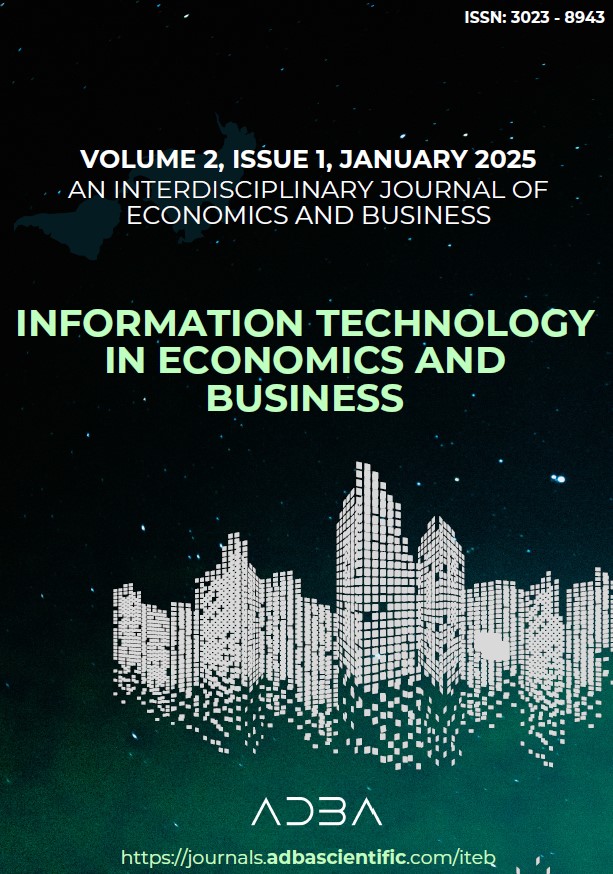Abstract
The recognition of historical artifacts play a crucial role in sustaining cultural heritage and advancing tourism. Despite advancements in object detection technologies, accurately identifying artifacts in diverse geographical and environmental contexts remains a significant challenge. Existing models often struggle to adapt to region-specific features and the complexity of historical artifacts, limiting their practical applications. To address these limitations, this study evaluates the potential of YOLOv4, YOLOv7-X, and YOLOv9c models for historical artifact recognition, with a particular focus on location-based segmentation. Geographically distinct datasets were utilized for training and evaluation, enabling the models to achieve higher accuracy in region-specific artifact detection. Among the tested models, YOLOv9c demonstrated superior performance, achieving the highest metrics across accuracy (96%), precision (93%), recall (95%), and mean average precision (mAP, 71%), making it the best-performing model. These results highlight YOLOv9c’s robustness and adaptability to complex datasets and diverse artifact characteristics. A user-friendly application interface was also developed, allowing real-time detection and providing detailed historical information about the artifacts. However, challenges such as the high computational cost of training YOLOv9c on high-resolution datasets were observed, particularly when compared to YOLOv4, which was computationally efficient but less accurate. YOLOv7-X offered a balance between performance and computational efficiency. The results demonstrate that location-based segmentation significantly enhances detection accuracy, making this approach highly effective for real-world applications in cultural heritage preservation and tourism.
References
Agapie, O., A. Alexandrescu, and D. Turcanu, 2024. Cloud-based distributed solution for optimizing the search for tourist destinations. In 2024 23rd RoEduNet Conference: Networking in Education and Research (RoEduNet), pp. 1–6.
Bochkovskiy, A., C.-Y. Wang, and H.-Y. M. Liao, 2020. Yolov4: Optimal speed and accuracy of object detection.
Cosar, M. and H. E. Kiran, 2021. Verification of localization via blockchain technology on unmanned aerial vehicle swarm. Computing and Informatics 40: 428–445.
Coşar, M. and H. E. Kiran, 2018. Measurement of raspberry pi performance in network traffic analysis. In 2018 26th Signal Processing and Communications Applications Conference (SIU), pp. 1–4.
Deniz, E., 2024. Evaluating the effectiveness of machine learning models in predicting student academic achievement. ADBA Computer Science 1: 8–13.
Devlin, J., M. Chang, K. Lee, and K. Toutanova, 2018. BERT: pretraining of deep bidirectional transformers for language understanding. CoRR abs/1810.04805.
Guan, X., L. Zhang, X. Liu, and Q. Liu, 2025. An eye for an eye: Exploring how human-robot service attributes affect customers’ negative electronic word-of-mouth. International Journal of Hospitality Management 127: 104104.
Guidosse, Q., J. Breyne, A. Cioppa, K. Maréchal, U. Rubens, et al., 2025. Combining camera traps and artificial intelligence for monitoring visitor frequencies in natural areas: Lessons from a case study in the Belgian Ardenne. Journal of Outdoor Recreation and Tourism 49: 100856.
Hilali, I., A. Alfazi, N. Arfaoui, and R. Ejbali, 2023. Tourist mobility patterns: Faster R-CNN versus YOLOv7 for places of interest detection. IEEE Access 11: 130144–130154.
Homay, A., A. Zoitl, M. de Sousa, and M. Wollschlaeger, 2019. A survey: Microservices architecture in advanced manufacturing systems. In 2019 IEEE 17th International Conference on Industrial Informatics (INDIN), volume 1, pp. 1165–1168, IEEE.
Khairy, H. A., Y. M. Lee, and B. S. Al-Romeedy, 2025. Leader star competence and green competitiveness in tourism and hotel enterprises: Leveraging green creativity and human capital. Journal of Hospitality and Tourism Insights.
Kılıçhan, R. and M. Yılmaz, 2020. Artificial intelligence and robotic technologies in tourism and hospitality industry. Erciyes Üniversitesi Sosyal Bilimler Enstitüsü Dergisi pp. 353–380.
Liu, Y., F. Han, L. Meng, J. Lai, and X. Gao, 2025. Textual sentiment classification in tourism research: Between manual computing model and machine learning. Current Issues in Tourism pp. 1–22.
Loureiro, S. M. C., J. Guerreiro, and F. Ali, 2020. 20 years of research on virtual reality and augmented reality in tourism context: A text-mining approach. Tourism Management 77: 104028.
Lu, C.-T., Q.-Y. Chen, H.-H. Cho, S.-Y. Chang, K.-W. Zhou, et al., 2025. Implementation of campus unmanned guided vehicle using YOLO network with lidar positioning. IET Conference Proceedings 2024: 173–174.
Molina-Collado, A., M. Gómez-Rico, M. Sigala, M. V. Molina, E. Aranda, et al., 2022. Mapping tourism and hospitality research on information and communication technology: A bibliometric and scientific approach. Information Technology & Tourism 24: 299–340.
Rather, R. A., 2025. Does consumers’ reveal engagement behaviours in artificial intelligence (AI)-based technologies? The dynamics of perceived value and self-congruence. International Journal of Hospitality Management 126: 103989.
Ren, S., K. He, R. Girshick, and J. Sun, 2016. Faster R-CNN: Towards real-time object detection with region proposal networks. IEEE Transactions on Pattern Analysis and Machine Intelligence 39: 1137–1149.
Sánchez-Juárez, I. R. and M. P. Paredes-Xochihua, 2024. Augmented reality as a support for tourism promotion. ECORFAN Journal-Republic of Paraguay 10: 1–10.
Seyfi, S., M. J. Kim, A. Nazifi, S. Murdy, and T. Vo-Thanh, 2025. Understanding tourist barriers and personality influences in embracing generative AI for travel planning and decision-making. International Journal of Hospitality Management 126: 104105.
Sherly, P. S. and P. Velvizhy, 2024. "Idol talks!" AI-driven image to text to speech: Illustrated by an application to images of deities. Heritage Science 12.
Shi, K., C. Zhu, J. Li, X. Zhang, F. Yang, et al., 2024. Spatiotemporal information, near-field perception, and service for tourists by distributed camera and Beidou positioning system in mountainous scenic areas. ISPRS International Journal of Geo-Information 13: 370.
Wang, C.-Y., A. Bochkovskiy, and H.-Y. M. Liao, 2022. Yolov7: Trainable bag-of-freebies sets new state-of-the-art for real-time object detectors.
Wang, C.-Y., I.-H. Yeh, and H.-Y. Mark Liao, 2025. Yolov9: Learning what you want to learn using programmable gradient information. In European Conference on Computer Vision, pp. 1–21, Springer.
Zouni, G. and A. Kouremenos, 2008. Do tourism providers know their visitors? An investigation of tourism experience at a destination. Tourism and Hospitality Research 8: 282–297.

This work is licensed under a Creative Commons Attribution-NonCommercial 4.0 International License.

